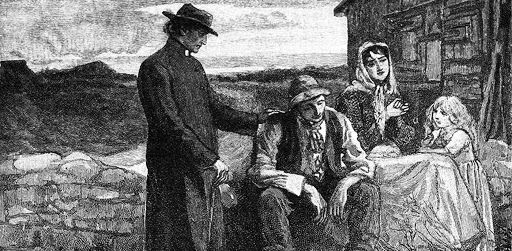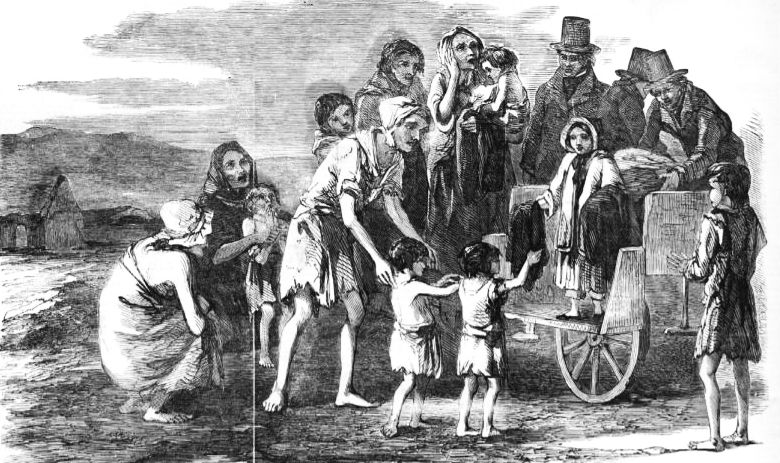Authors:
Historic Era: Era 4: Expansion and Reform (1801-1861)
Historic Theme:
Subject:
Winter 2020 | Volume 64, Issue 1


Authors:
Historic Era: Era 4: Expansion and Reform (1801-1861)
Historic Theme:
Subject:
Winter 2020 | Volume 64, Issue 1
Editor’s Note: Stephen Puleo is the author of seven books of history including the bestseller Dark Tide, The Boston Italians, American Treasures, and The Caning. His most recent, Voyage of Mercy, from which this essay is adapted, tells the dramatic story of the American efforts to save the Irish people suffering from famine.
The destruction of the potato crop had occurred — or, rather, revealed itself — almost overnight. The Reverend Theobald Mathew, a priest based in Cork city, Ireland, was one of the first to observe and report on the disaster. In late July, he was traveling from Cork to Dublin and saw fields of potato plants blooming “in all the luxuriance of an abundant harvest;” a sight that heartened him after widespread potato crop failure a year earlier had resulted in severe food shortages, but not full-scale famine.
But six days later, August 3, 1846, during his return trip to Cork, Mathew’s spirit was shattered when he “beheld, with sorrow, one wide waste of putrefying vegetation.” The blight, caused by a fungus that thrived and multiplied in Ireland’s damp climate, had reproduced with lightning speed. In many places along the road, “the wretched people were seated on the fences of their decaying gardens, wringing their hands and wailing bitterly against the destruction that had left them foodless.”

Four days later Mathew expressed the worst in a letter to Charles Edward Trevelyan, assistant secretary to the Treasury in London: “I am grieved to be obliged to tell you that the distress is universal. Men, women, and children are gradually wasting away.”
Mathew, known best as Ireland’s “Temperance Priest;’ was a heroic and indomitable figure fighting — though mostly in vain — to save the lives of his starving countrymen. These imperiled citizens were not anonymous “famine victims,” but people he knew and loved — neighbors, parishioners, followers, friends. At this point, more than one-third of the entire Irish population depended exclusively on the potato for food and as a cash crop, but among poor tenant farmers, the proportion was even higher; a strong potato crop was their only hope for sustenance, for nourishment, for life itself.
Despite this backdrop of nearly unfathomable despair, the remarkable and unprecedented relief effort by the government and citizens of the United States to assist Ireland during the terrible famine year of 1847 is a story of hope, generosity, and soaring goodwill.
